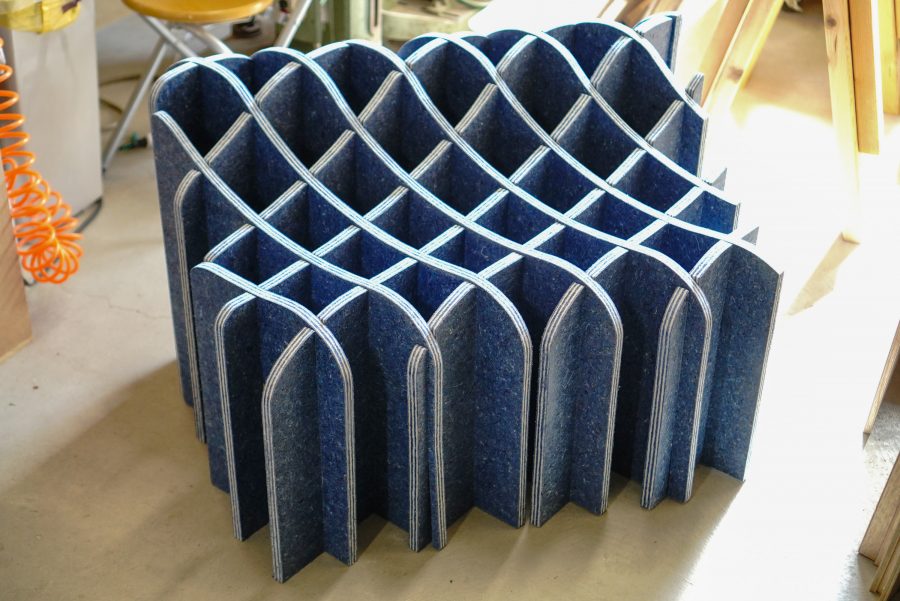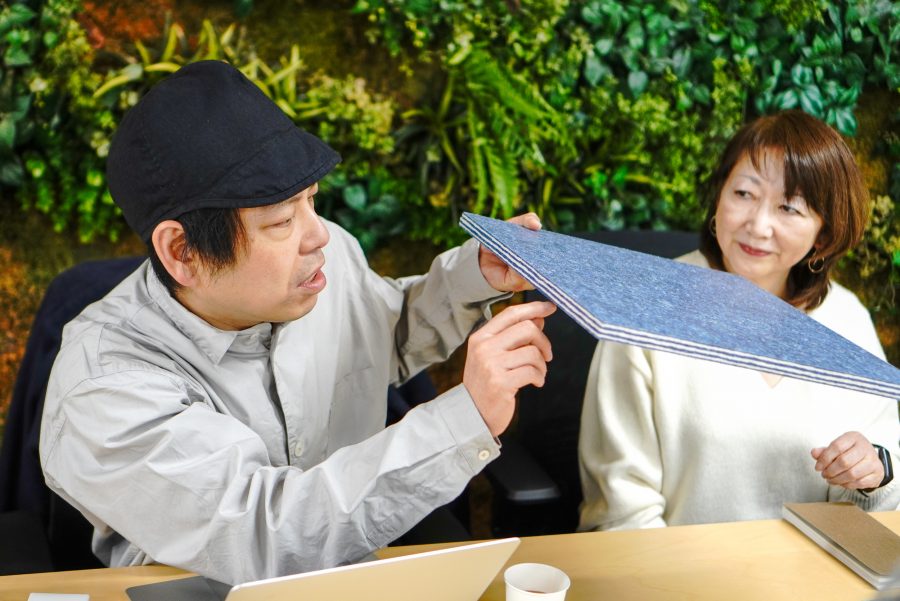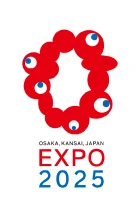
Uchimaru invented a “color recycling system” for upcycling waste fibers, which are difficult to sort by material, by sorting them based on color. The first product made of the board material “TEXLAM,” which was developed by utilizing the color recycling system, is the bench to be displayed at the venue of the Expo 2025 Osaka, Kansai, Japan. A total of five benches, comprising blue and green ones, will be placed in front of the round stage inside the pavilion, to depict a unique view of the world.
The designer Yoshida of Abode pursued a design that would generate an impact on visitors. TEXLAM is also characterized by the design of the cross section of the multilayered structure composed of beige and blue/green layers. Yoshida drew an organic, streamlined, dynamic curve on the bench by utilizing the cross section skillfully.
TEXLAM is a material jointly developed by Colourloop, which is represented by Uchimaru, Nakano, which is a fiber recycling company, and Abode. In Nakano, piles of used clothes are conveyed with a conveyor belt. Firstly, vintage clothing dealers sort out second-hand clothes that can be sold. Secondly, industrial materials, such as wiping/scrubbing cloth at factories, are sorted out. Lastly, the remaining waste becomes the raw material for TEXLAM. Fibers themselves will be reused as coloring or reinforcing materials, so there will be no problems even if miscellaneous fiber materials are mixed, torn, or discolored. The remaining used clothes will be efficiently sorted by color based on the color recycling system, defibrated, formed into felt, and then reborn as the product TEXLAM with new value. For a single bench to be displayed at the Expo, the fibers of 600 T-shirts (100 g per T-shirt) will be used, so for a total of 5 benches, the fibers of 3,000 T-shirts will be used. As the bench size was changed after checking the comfort of the seat of the prototype, it became possible to upcycle a larger amount than initially assumed. It is possible to adjust the color, thickness, density, etc. of TEXLAM freely, so if it is utilized as a building material, an interior finishing material, etc., a new recycling route will be built.
This bench has a unique texture derived from the touch of fibers. Yoshida passionately said, “What matters the most is the charm of raw materials. We hope to have visitors realize that this kind of bench can be produced, and trigger movements.”
Uchimaru said, “We do not want to force consumers to use recycled products, but hope to create products that can be produced only from waste fibers. We aim to realize an affluent, enjoyable recycling society.”
In Japan, as much as 2 million tons of waste fibers are generated every year, and three-fourths of them are incinerated as waste. Uchimaru has addressed this problem, by “recycling materials by colors.” There are some high hurdles, such as the improvement in popularity and cost reduction, but they hope to make a great leap forward to bring out the potential beyond the hurdles through the Expo 2025 Osaka, Kansai, Japan.

CG image of completed benches to be placed in front of the round stage inside the pavilion

(From left) Mr. Go Yoshida of Abode Co., Ltd., who is holding the board “TEXLAM” to be used for the bench, and Ms. Motoko Uchimaru, CEO of Colourloop Co., Ltd.
Share this article


